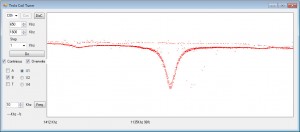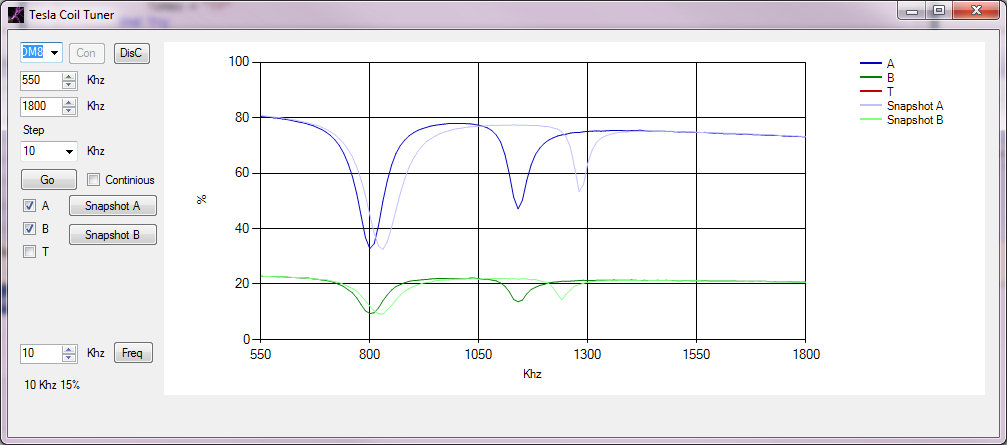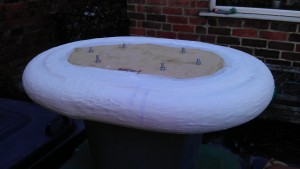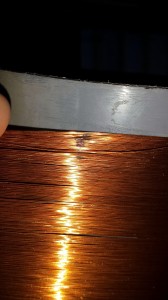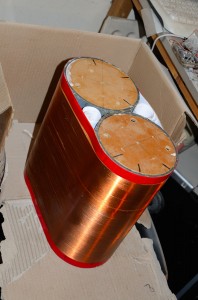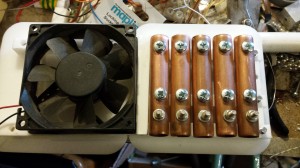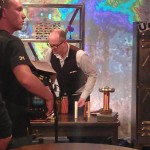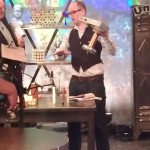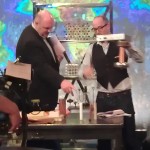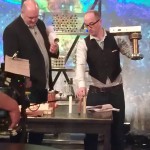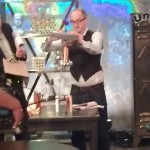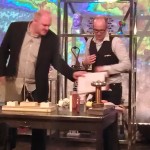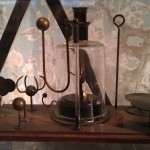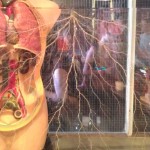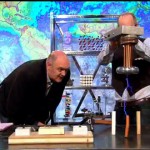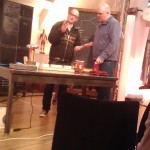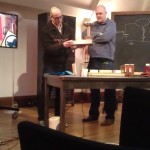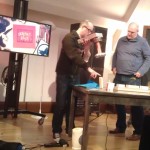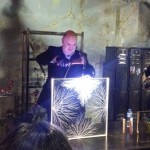I have been asked this question so many time I thought I aught to write down the answer.
Musical tesla coils are fairly common now and there are many videos of them working, but what causes the noise.
So lets start with the basics. Most electronic tesla coils don’t run continuously (Ill come back to CW coils later). To maintain a large spark output current in the primary circuit is key, to get the best out of the components the coils are driven for short periods of time, at high currents, quite often exceeding the continuous rating of the drivers. During this short ‘on’ period, power is stored as in the primary and secondary coil. As soon as the power is turned off the stored energy is transformed into a high voltage high frequency pulse. It is this pulse that you see as the discharge from the top of the coil.
Creating hot plasma in the atmosphere has an effect, the air heats up to thousands of degrees C in a microsecond or so. This expanding air causes a sound wave that you hear as a click. (or a bang with real lightning, its just a matter of scale.)
So, if you repeat this process at say 263 times a second, you will hear an audio tone at middle C
Music can be played by controlling the length and frequency of the pulses you send to the coil. With these coils getting the frequency and length information is relatively simple from a MIDI audio source via a suitably programmed microprocessor.
Due to the pulsed nature of the coil real audio (e.g speech,singing etc) cannot be rendered.
OK, I mentioned CW (Constant or Carrier wave) Tesla coils
With CW coils the power isn’t interrupted they are driven constantly. Their output is essentially silent (You do get a hiss at lower frequencies due to variations in the spark output). To get music from these coils you vary the power going in to them in a very similar way to an AM radio transmitter. There is two ways of achieving this.
1) You control the voltage to the driver therefor controlling the power
2) You vary the frequency of the drive (FM modulation), The tuned circuit formed by the secondary gives maximum output only at the central frequency, so the effective output power is varied as the frequency is varied.
As the power is continuous, you can’t gain any power advantage by short pulses and neither do you get the voltage gain by the release of the stored power in the secondary so the sparks are smaller than a pulsed coil.
But, you can render speech, singing and any instrument can be played due to the almost radio style modulation. Plasma speakers are made using this technique.

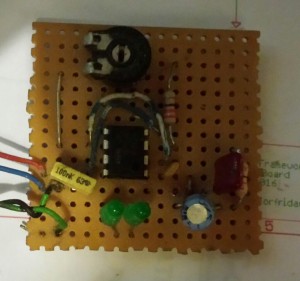 So I needed to get a better Tesla coil Tuner. I have been using this NE555 pinger for 10+ years.
So I needed to get a better Tesla coil Tuner. I have been using this NE555 pinger for 10+ years.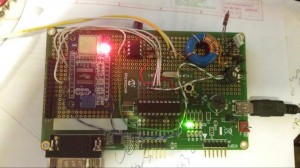 to the Primary Coil with current measuring.
to the Primary Coil with current measuring.